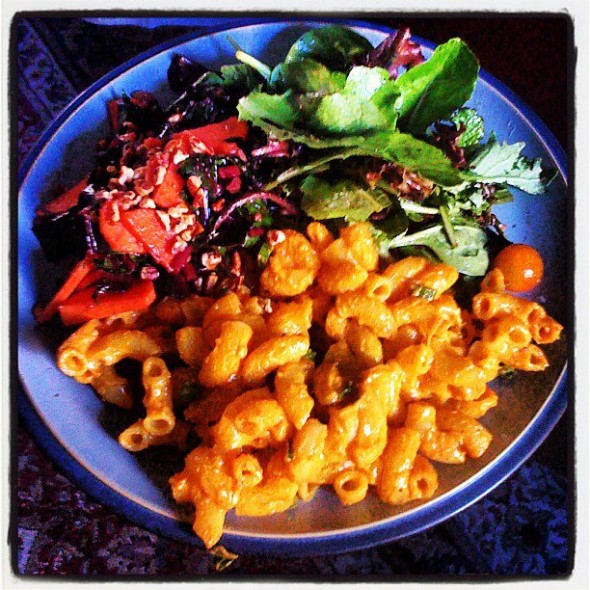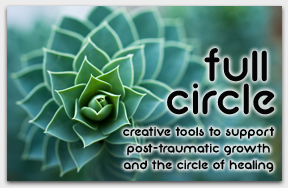How to Win the Food Stamp Challenge

On May 11, 2012 the Food Bank of NYC and chef Mario Batali begin their weeklong Food Stamp Challenge. By inviting New Yorkers to eat meals valued at $1.48 throughout their day, the Food Bank hopes to raise awareness about the reality of food stamps, whose funding is currently at risk under the Farm Bill indecision of 2012. The Farm Bill currently makes provisions for funding SNAP, the Supplemental Nutrition Assistance Program, still widely referred to as food stamps, of which nearly 50 million Americans are recipients.
Even though today is the first day of the Challenge, I have already declared myself a winner. In fact, I am a veteran to this challenge, and can count as many championship wins as I have fingers. Not that it’s competitive or anything like that, and since I think everyone should get a chance to win, I’ve outlined my strategy below. I should note that I am an unconventional nutritionist. Having completed my training and education while receiving the $200 food stamp maximum for several years, I have written My Food Stamps Cookbook, a collection of recipes and guides to using the SNAP resource for healing. Follow these 10 steps, inspired by My Food Stamps Cookbook, to frugal fulfillment:
- Do not think of the price of meals. Rather, think of the most food you can get for the least amount of money. And rather than thinking of bulky filler foods like breads, begin understanding that bulk caused by a food’s ability to retain water will fill you up and digest more efficiently. That said:
- Plants take the cake. Lettuces, cabbage, root veggies, tomatoes, bell peppers, celery, etc., when eaten without being cooked, are primarily water, starch, some protein, sugars, and nutrients. Not only will they fill a tummy, they are powerful foods, and significantly more nutritious than processed grains and packaged foods. Follow with cooked veggies (especially starches like sweet potato, plantain, cooked cauliflower and broccoli), nuts, seeds, and whole grains, and I guarantee you will be quite full.
- Minimize foods that are considered commodities by the USDA and are generally subsidized by the Farm Bill. Historically, Farm Bill legislation has made way for factory farms and big corporations to exploit the food system and create detrimental conditions such as over-production of dairy, wheat, soy, and corn. The massive production of corn is linked to the need for these companies to feed their corrupt factory meat production demons, which are now understood to be more harmful to the environment than automobiles. Not only are these food sources less beneficial to the body, they are usually more expensive than live plant sources. In the Food Stamp Challenge toolkit we are told to consider that the price of a gallon of milk is more than an entire day’s food budget. My Food Stamps Cookbook, however, asks you to consider why you would consume cow’s milk anyway, since most humans are lactose intolerant after their nursing years, and milk is not a more efficient source of calcium than green leafy vegetables. In order to win this you have to flip the conventional wisdom of our food culture on its head.
- Have food sources beyond grocery stores. While the toolkit prohibits receiving food from outside sources (“DON’T accept free food from friends, family or colleagues – this includes food served at work, parties or events you are attending”), I fully embrace it. I will further address the flaw in this prohibition below, especially as it pertains to receiving food from community. I first want to highlight the strategy of finding non-monetarily linked edible resources. You are allowed and encouraged to get food from nearby trees, your own garden, herbs that you see growing, and community gardens (with permission). You are also welcome to explore the plethora of good ripe produce that is placed in boxes on the curbs in front of grocery stores. Wholefoods and Perelandra are my faves in Manhattan and Brooklyn.
- Keep your friends close; keep your friends with benefits closer. When people with limited budgets and SNAP benefits share our resources, we find creative strategies for sustainable nutrition in addition to building trust and community over delicious meals. Take this timeless SNAP parable, for example: There once were two college students with food stamps. They put their benefits together and cooked a dinner party for their friends. Their guests left donations, and at the end of the night, they had earned back their food expenses and made some money toward the rent.
- Eat clean, eat swell. Know the clean fifteen, the produce that is least contaminated by pesticides. Most of these will be available for less money at local produce and grocery stores. Buy a lot, and eat often.
- You have to shop around. Local bodegas can be good for certain things like onions, herbs/spices, nuts/seeds, but so-called “ethnic” markets will carry a wider and cheaper selection of non-organic fruits and veggies from the clean list. Some higher-priced health food stores and chains may have the best prices on good oils. Essentially, you will have to spend more time than you may be accustomed to in the pursuit of affordable wholesome foods.
- Double or nothing! Look for incentive programs that give you bonus benefits for shopping at farmers market, and CSAs that are subsidized for people paying with SNAP. Last summer Central Brooklyn CSA’s full fruit and veggie share was under $9 per week for food stamp recipients.
- Drink more water. Sometimes when we feel “hungry,” we are actually thirsty, and all of us could benefit from increased hydration. Your organs will thank you.
- Change your body’s energy levels. This is a more complex action step, and something that I work toward with my clients over the course of a number of healing sessions. In summary, it means to understand our different energetic needs at different times of the day, and how the foods we eat influence our mood and physical wellbeing. You just might need less food than you think if your body can utilize it more efficiently.
When you follow these steps and win the Food Stamp Challenge, you will get the bonus prize of increased energy, better mood, nicer skin and hair, and decreased water weight. See you at the finish line!
Sources:
Bolden-Kramer, Rachel, “My Food Stamps Cookbook.” http://www.hipdhamma.com
Imhoff, Daniel, “ Food Fight: The Citizen’s Guide to the Next Food and Farm Bill.”
McQuirter, Tracy Lynn, “By Any Greens Necessary: A Revolutionary Guide for Black Women Who Want to Eat Great, Get Healthy, Lose Weight, and Look Phat.”
Environmental Working Group, “Shoppers Guide to Pesticides in Produce: The Dirty Dozen and the Clean Fifteen,” http://www.ewg.org/foodnews/






5 Comments
sooze
May 16, 2012Was sooo glad to see Mario doing this. There was criticism in some circles about him doing this (famous/rich chef, publicity, owns high end restaurants that don’t take food stamps, etc) but to me he is making an honest effort to show his children that not everyone is as priveledged as they are and that there is a whole ‘nother world out there and some children are hungry and their family needs help.
My husband and I have been doing this on a regular basis for the last few years *particularly in Lent, 6 weeks*. We have also done various challenges as to eating Tex Mex on $50/week, then one for $25 a week for two weeks (won’t do that again). What it teaches us is hunger awareness and makes us grateful for what we have. The $ differences in our food bill goes to the local food bank. It takes discipline and I really could not add much to what you have already written. But my favorite tip has always been to only go once a week to the grocery and if you find yourself in need of something (vital ingredient or whatever) just find an alternative or do without.
Danielle
June 29, 2012Lots of good ideas here! I agree 100% that you can eat healthy and cheap.
Hip Dhamma » Gazpacho
August 16, 2012[…] Gazpacho Aug 16, 2012 Greetings Readers! Here is my weekly recipe I create based on the weekly share of fruits and veggies I get from my CSA (Community Supported Agriculture). Our food comes from a local farm and is organic and fresh. At Central Brooklyn CSA, you can pay with EBT food stamps, which makes getting affordable food easy for folks on tight budgets. Also, because we use a sliding scale, EBT recipients receive a full weekly share for under $7. Joining a CSA is just one of the ways to Win the Food Stamp Challenge. […]
Monica
June 18, 2017Where can we buy the cookbook?
rachel
July 28, 2017Hi! Just launched our new order page. Thanks for your support
https://myfoodstampscookbook.backerkit.com/